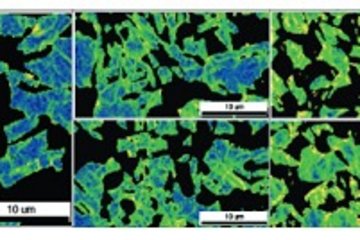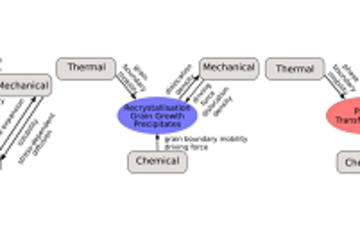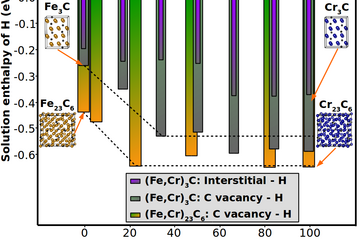All genres
1.
Journal Article
Advancing oxygen evolution catalysis with dual-phase nickel sulfide nanostructures. Energy & Fuels 39 (2), pp. 1375 - 1383 (2025)
2.
Journal Article
Enhanced magnetoelectric and energy storage performance of strain-modified PVDF-Ba0.7Ca0.3TiO3-Co0.6Zn0.4Fe2O4nanocomposites. Journal of energy storage 87, 111454 (2024)
3.
Journal Article
Functionally Graded AA7075 Components Produced via Hot Stamping: A Novel Process Design Inspired from Analysis of Microstructure and Mechanical Properties. Advanced Engineering Materials - Special Issue: Structural Materials 25 (15), 2201879 (2023)
4.
Journal Article
Low-Cycle-Fatigue Performance of Stress-Aged EN AW-7075 Alloy. Advanced Engineering Materials 25 (15), 2300090 (2023)
5.
Journal Article
Assessment of the impact of process parameters on the final material properties in forming of EN AW 7075 employing a simulated forming process. Journal of Manufacturing Processes 86, pp. 336 - 353 (2023)
6.
Journal Article
Non-uniform He bubble formation in W/W2C composite: Experimental and ab-initio study. Acta Materialia 226, 117608 (2022)
7.
Journal Article
In situ precipitation synthesis of FeNi/ZnO nanocomposites with high microwave absorption properties. Materials Chemistry and Physics 266, 124508 (2021)
8.
Journal Article
TEM investigation of pre-oxidised Fe–Al with improved aqueous corrosion resistance. Corrosion Science 179, 109170 (2021)
9.
Journal Article
TiO2–β–Bi2O3 junction as a leverage for the visible-light activity of TiO2 based catalyst used for environmental applications. Catalysis Today 361, pp. 165 - 175 (2021)
10.
Journal Article
Role of CO2 During Oxidative Dehydrogenation of Propane Over Bulk and Activated-Carbon Supported Cerium and Vanadium Based Catalysts. Catalysis Letters 151 (10), pp. 2816 - 2832 (2021)
11.
Journal Article
Formation of isolated Ge nanoparticles in thin continuous Ge/SiO2 multilayers. Vacuum 179, 109508 (2020)
12.
Journal Article
Reusable Au/Pd-coated chestnut-like copper oxide SERS substrates with ultra-fast self-recovery. Applied Surface Science 517, 146205 (2020)
13.
Journal Article
Development of BMG-B2 nanocomposite structure in HAZ during laser surface processing of ZrCuNiAlTi bulk metallic glasses. Applied Surface Science 505, 144535 (2020)
14.
Journal Article
Crystal structure and composition dependence of mechanical properties of single-crystalline NbCo2 Laves phase. Acta Materialia 184, pp. 151 - 163 (2020)
15.
Journal Article
Tungsten carbide as a deoxidation agent for plasma-facing tungsten-based materials. Journal of Nuclear Materials 524, pp. 135 - 140 (2019)
16.
Journal Article
TiN-Nanoparticulate-Reinforced ZrO2 for Electrical Discharge Machining. Materials 12 (17), 2789 (2019)
17.
Journal Article
Alkali and earth alkali modified CuOx/SiO2 catalysts for propylene partial oxidation: What determines the selectivity? Applied Catalysis B: Environmental 237, pp. 214 - 227 (2018)
18.
Journal Article
Synthesis and characterization of the thermally reduced graphene oxide in argon atmosphere, and its application to construct graphene paste electrode as a naptalam electrochemical sensor. Analytica Chimica Acta 1035, pp. 22 - 31 (2018)
19.
Journal Article
Stress Evolution during Ge Nanoparticles Growth in a SiO2 Matrix. Inorganic Chemistry 57 (23), pp. 14939 - 14952 (2018)
20.
Journal Article
Investigation of mechanical, dynamic mechanical, rheological and morphological properties of blends based on polypropylene (PP) and cyclic olefin copolymer (COC). European Polymer Journal 108, pp. 439 - 451 (2018)











